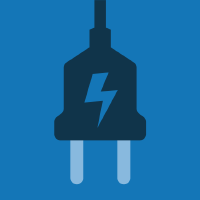Topic Menu
► Topic MenuTopic Editors


Electricity Demand-Side Management

Topic Information
Dear Colleagues,
We would like to invite submissions to this Topic on the subject of Electricity Demand-Side Management.
Demand-side management (DSM) is a critical instrument to deal with contemporary utility business risks. At the same time, it is also part of the portfolio of options of energy and environmental policies in the context of climate change. The electricity industry is unbundled in many parts of the world, as in many others, it still is vertically integrated. DSM plays similar roles in both cases. Consolidated management instruments may be used in the case of vertically integrated utilities, where the impacts of acting on the demand side are perceptible across the value chain. In the case of liberalized markets of electricity, new approaches have to be used, as there is a much larger number of relevant economic agents whose interests are not coincident. New insights and methods have to be used for assessing the economic and societal interest of DSM programs and measures.
Together with distributed energy resources, DSM is a part of a larger picture where demand flexibility is key to a sustainable energy future, where renewable electricity, energy storage, demand response, electric mobility and smart grids are all inextricably connected.
We look forward to your submissions with new insights into the contemporary and future roles of DSM.
Prof. Dr. António Gomes Martins
Prof. Dr. Luís Pires Neves
Prof. Dr. José Luís Sousa
Topic Editors
Keywords
- demand-side management
- demand response
- energy efficiency
- cost–benefit analysis
- distributed energy resources
- flexibility management
- flexible demand in smart buildings
- behind-the-meter storage control
- consumer behavior
Participating Journals
| Journal Name | Impact Factor | CiteScore | Launched Year | First Decision (median) | APC |
|---|---|---|---|---|---|

Energies
|
3.0 | 6.2 | 2008 | 17.5 Days | CHF 2600 |

Processes
|
2.8 | 5.1 | 2013 | 14.4 Days | CHF 2400 |

Electricity
|
- | 4.8 | 2020 | 27.2 Days | CHF 1000 |

Clean Technologies
|
4.0 | 6.1 | 2019 | 30 Days | CHF 1600 |

Smart Cities
|
7.0 | 11.2 | 2018 | 25.8 Days | CHF 2000 |

MDPI Topics is cooperating with Preprints.org and has built a direct connection between MDPI journals and Preprints.org. Authors are encouraged to enjoy the benefits by posting a preprint at Preprints.org prior to publication:
- Immediately share your ideas ahead of publication and establish your research priority;
- Protect your idea from being stolen with this time-stamped preprint article;
- Enhance the exposure and impact of your research;
- Receive feedback from your peers in advance;
- Have it indexed in Web of Science (Preprint Citation Index), Google Scholar, Crossref, SHARE, PrePubMed, Scilit and Europe PMC.
Related Topic
- Electricity Demand-Side Management, 2nd Volume (5 articles)

